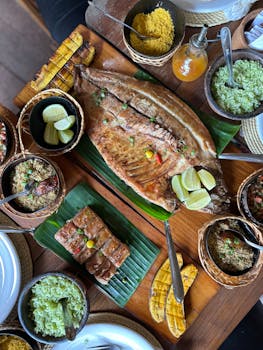Trips
Explore the World: Tips for Using Translation Apps While Traveling
Technology has made it easier to communicate while traveling. Discover essential translation apps and how to use them for a richer, more immersive experience.
Advertisement
Traveling is an incredible and enriching experience, but it can present challenges, especially when it comes to communication. One of the most common obstacles travelers face is the language barrier. In places where the local language is different, translating signs, menus, and signs becomes essential to making the most of your trip.
Fortunately, with the advancement of technology, there are several applications that can make this process easier. These tools help translate texts in real time using your smartphone's camera. This makes it possible to decipher restaurant menus, store signs, and even road signs.
In addition to reducing communication difficulties, these apps contribute to a richer and more immersive trip. With their help, you can explore new destinations with confidence and freedom, helping to avoid misunderstandings that can arise due to language barriers.
Top Translation Apps
There are several apps on the market, each with specific features. It’s important to choose the one that best suits your travel needs. Here are some of the most recommended apps.
Google Translate is one of the most popular and offers translation of text, voice and even images. It works offline, which is a great benefit when traveling. Another popular app is Microsoft Translator, which also offers gesture translation capabilities.
iTranslate is an interesting option that includes over 100 languages and a user-friendly interface. In addition, Waygo focuses on menu and sign translations, being highly effective especially in Asia.
Apps like Papago and SayHi are also great options. Papago is great for translating between Asian languages, while SayHi offers real-time conversation, making it easy to have conversations.
Each app has its own specific features that cater to different types of travelers. Therefore, it is important to follow the reviews and experiences of other users to choose the ideal app.
How to Use Translation Apps
Using translation apps is simpler than it seems. First, you need to download the desired app and make sure it is up to date. This is essential to ensure proper functioning.
After installation, check if the app offers the option to download languages for offline use. This is crucial, especially if you are traveling to regions with limited internet access.
When you find yourself in a situation that requires translation, open the app and choose the appropriate functionality. Typically, the options include text, image, or voice translations. If you choose to use the camera, point it at the desired text.
The app will read and translate in real time, displaying the translated text on the screen. It is always a good idea to try out the tool before using it in real situations, to familiarize yourself with how it works.
Finally, remember that even with technology on your side, staying calm and patient is key. Communication is a dynamic process and will not always be perfect.
Advantages of Using Technology While Traveling
Technology has revolutionized the way we travel, bringing countless advantages. One of the main benefits of translation apps is the autonomy they provide travelers.
These apps make it easier to understand menus, signs, and other important text, allowing you to explore the place in more depth. This makes your experience more authentic and engaging.
Another positive point is access to real-time information. You can translate quickly during a conversation, avoiding misunderstandings and promoting better interaction with locals.
Additionally, apps frequently update their databases, improving the accuracy of translations. This is essential to ensure that you receive more reliable information.
Finally, using these technologies can enrich your learning about local culture. By better understanding what is written, you can engage more meaningfully with the local community.
Challenges of Using Translation Apps
While translation apps are very useful, they also present challenges that must be considered. First, the accuracy of the translation can vary greatly depending on the language and context.
Similarly, automatic translations can be inaccurate or fail to capture the essence of what is being communicated. This can lead to misunderstandings, especially in situations that require nuance.
Another challenge is using the technology in low-light environments. Translation accuracy can be compromised if the camera cannot read the text clearly.
The quality of your internet connection can also be a limiting factor. Even apps that work offline require pre-downloads to ensure that the languages are available.
Finally, it’s important to remember that relying solely on technology can limit your interaction with local people. Asking questions, trying to decipher and interpret the language are valuable ways to learn and integrate.
Best Practices for Efficient Use
To get the most out of translation apps, there are a few best practices to follow. First, familiarize yourself with the app’s features before you travel. This will help you use the tool more effectively.
Additionally, download the languages you expect to use most frequently while traveling. This way, you will be prepared for situations where the internet connection is unreliable.
Another tip is to use images and voice whenever possible. These functions can provide more accurate translations in situations where the written text is unclear or in a font that is difficult to render.
Keep a critical eye on the translations you receive. Sometimes you may need to adjust the interpretation, especially if the automatic translations don't make sense in the context.
Finally, don’t hesitate to ask locals for help. Despite technology, human interaction is still the best way to understand a new culture.
Conclusion
In short, translation apps are valuable allies when traveling. They provide autonomy and help overcome language barriers, making the experience of exploring new places more enjoyable.
However, it is essential to keep in mind the limitations of these tools and use them as an additional resource, not as a substitute for human interaction. With these precautions, your next trip can be much richer and more unforgettable.
Happy travels!





